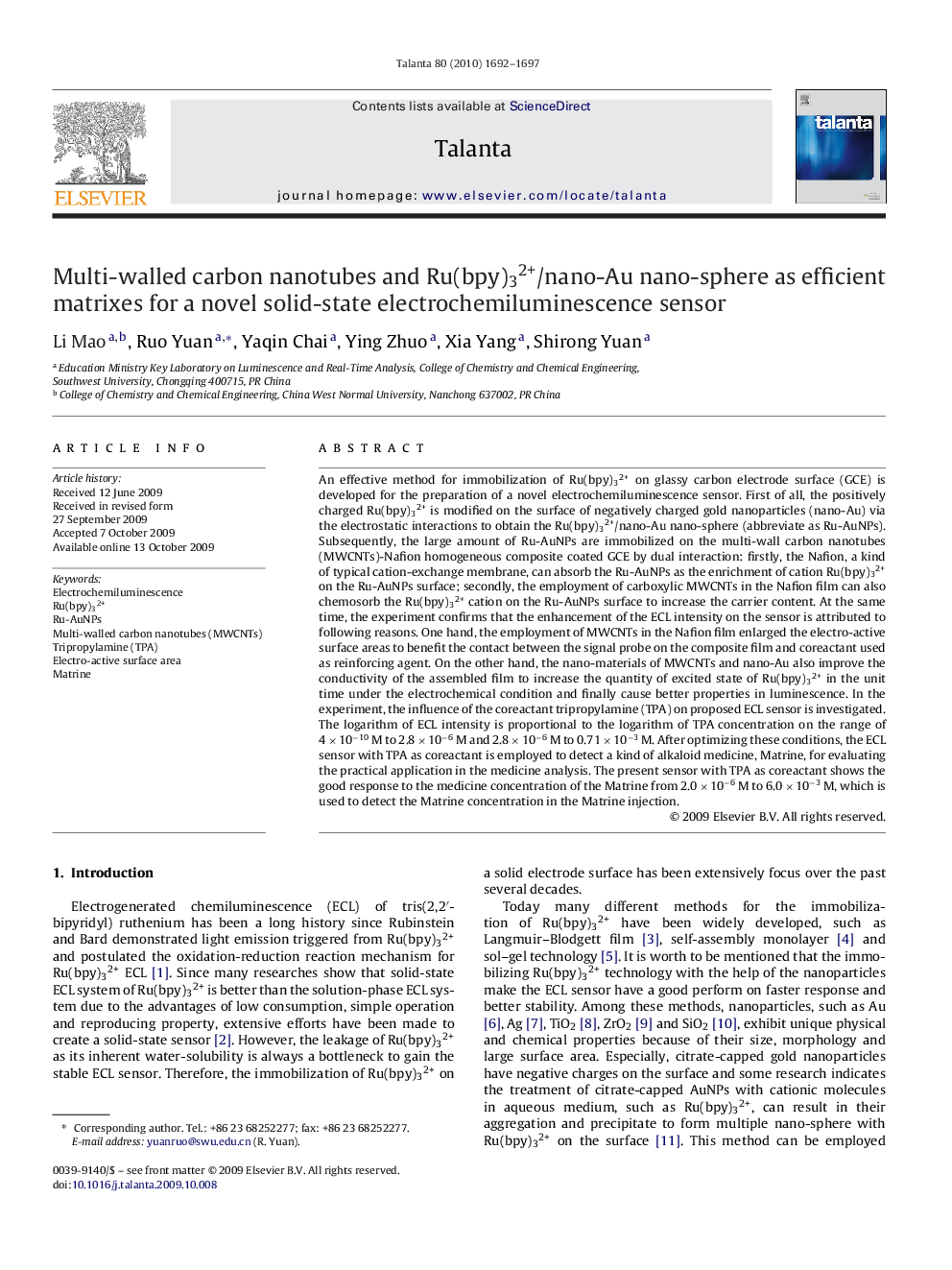| کد مقاله | کد نشریه | سال انتشار | مقاله انگلیسی | نسخه تمام متن |
|---|---|---|---|---|
| 1242968 | 1495852 | 2010 | 6 صفحه PDF | دانلود رایگان |

An effective method for immobilization of Ru(bpy)32+ on glassy carbon electrode surface (GCE) is developed for the preparation of a novel electrochemiluminescence sensor. First of all, the positively charged Ru(bpy)32+ is modified on the surface of negatively charged gold nanoparticles (nano-Au) via the electrostatic interactions to obtain the Ru(bpy)32+/nano-Au nano-sphere (abbreviate as Ru-AuNPs). Subsequently, the large amount of Ru-AuNPs are immobilized on the multi-wall carbon nanotubes (MWCNTs)-Nafion homogeneous composite coated GCE by dual interaction: firstly, the Nafion, a kind of typical cation-exchange membrane, can absorb the Ru-AuNPs as the enrichment of cation Ru(bpy)32+ on the Ru-AuNPs surface; secondly, the employment of carboxylic MWCNTs in the Nafion film can also chemosorb the Ru(bpy)32+ cation on the Ru-AuNPs surface to increase the carrier content. At the same time, the experiment confirms that the enhancement of the ECL intensity on the sensor is attributed to following reasons. One hand, the employment of MWCNTs in the Nafion film enlarged the electro-active surface areas to benefit the contact between the signal probe on the composite film and coreactant used as reinforcing agent. On the other hand, the nano-materials of MWCNTs and nano-Au also improve the conductivity of the assembled film to increase the quantity of excited state of Ru(bpy)32+ in the unit time under the electrochemical condition and finally cause better properties in luminescence. In the experiment, the influence of the coreactant tripropylamine (TPA) on proposed ECL sensor is investigated. The logarithm of ECL intensity is proportional to the logarithm of TPA concentration on the range of 4 × 10−10 M to 2.8 × 10−6 M and 2.8 × 10−6 M to 0.71 × 10−3 M. After optimizing these conditions, the ECL sensor with TPA as coreactant is employed to detect a kind of alkaloid medicine, Matrine, for evaluating the practical application in the medicine analysis. The present sensor with TPA as coreactant shows the good response to the medicine concentration of the Matrine from 2.0 × 10−6 M to 6.0 × 10−3 M, which is used to detect the Matrine concentration in the Matrine injection.
Journal: Talanta - Volume 80, Issue 5, 15 March 2010, Pages 1692–1697